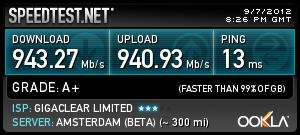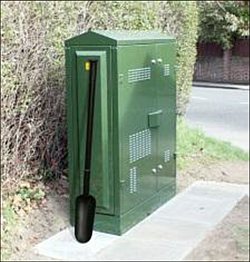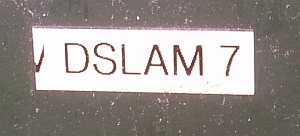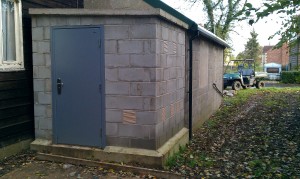FTTP on demand – will customers go for it?
Yesterday was at the Ageas Bowl in Southampton to give a talk on connectivity to a community of businessmen and IT types. Hampshire is, like many counties, very rural and there was a degree of complaining from the audience regarding the availability of decent connectivity.
Although the BDUK funded Next Generation Access project is rolling out to supposedly cover 90% of the country that still leaves a lot of people without access, or at least with the pitiful 2Mbs that the government it its wisdom has decided is good enough for the last 10%.
One chap mentioned that he had 20 rural sites that needed connecting. My answer to him was Fibre To The Premises on Demand which is currently being trialled by BT. FTTP on Demand has a fibre connection from the cabinet to your premises. The comparison is with Fibre To The Cabinet (FTTC) which has a copper cable between you and the cabinet. FTTP therefore, in principle offers the prospect of much faster throughputs than FTTC. Initially FTTP on Demand should provide 330Mbps down and 30Mbps up, once you’ve paid for the connection. The connection charge will almost certainly not be the few tens of pounds you might fork out for a new phone line. It’s more likely to be in the low thousands of pounds.
Notwithstanding that there is a fair chance that FTTP would do the job for many rural areas. This then prompted me to compare an FTTP solution with a standard Ethernet fibre connection.
What is the difference between FTTP and a fibre Ethernet connection?
FTTP whilst being fibre all the way to your premises runs over the BT 21CN Wholesale Broadband Connect (WBC) network. This is the backbone network that carries most BT broadband traffic. Because BT has a near monopoly the pricing for this is regulated “to ensure a level playing field” but is fairly expensive (regulated price is £48 per Mbps). To make broadband services economic to provide an ISP will rent a certain amount of bandwidth over WBC and use it to service multiple customers. It is therefore a shared network.
In reality this works very well, most of the time. Although FTTP isn’t a production product yet the mechanics are similar to Fibre To The Cabinet (FTTC). A network with say 40Mbps amount of capacity to carry FTTC traffic will be able to serve multiple 40Mbps FTTC lines because they won’t all be using it at the same time. Ok if everyone was online downloading torrents at the same time that is likely to cause problems but by and large that doesn’t happen and ISPs have their own ways of dealing with the situation.
ISPs productise this type of connection and normally limit the data transfer bandwidth in a bundle of Gigabytes. They do this because a given sized backhaul connection will be able to handle a certain number of bytes in a given time period. This usage capacity is usually determined for a window at the busiest time of day.
Some ISPs offer “unlimited” packages. BT is one. BT offer an unlimited data bundle for their 80/20 FTTC product (they quote something like “up to 76Mbs down and 17Mbps up”) for £61 plus vat including calls and line rental (plus another fiver for a static IP). The Timico equivalent is £60 for the same product with 500GB a month of data. The Timico version might not sound as good as BT’s but the reality is that very few people ever come close to 500GB in a month. My “best” ever month was 250GB last December and I am a very heavy user. Also if average usage grew to levels unacceptable to BT you can bet your bottom dollar that they would either increase their pricing or stick in a limit.
There is a point to this bit of the discussion which I will come back to later.
Ethernet, as opposed to FTTC is a different product altogether. It is still fibre to the premises but relies on an unregulated backhaul network that very much has competition. The cost of the backhaul on Ethernet is anything up to ten times lower than that of FTTP (that’s what a bit of competition can do). Also Ethernet provides symmetrical uncontended connectivity. Ie it is the same speed up and down and you don’t share the connection with anyone else (though you can buy contended Ethernet which will be slightly cheaper).
Although the backhaul bandwidth is cheaper for Ethernet the fact that you are paying for it all means it is more expensive than FTTx (P or C). The flipside is that you can shift an awful lot more data in the month. A 100Mbps Ethernet connection should let you transfer 32Terabytes a month – massively more than the 500GB bundle I quoted earlier for FTTC. Also remember that Ethernet is symmetric – a 100Mbps connection is 100Mbps in each direction, whereas FTTP is 330 Mbps down and 30Mbps up.
Although there isn’t an official line on this it seems clear to me that BT has set the asymmetric levels for two reasons. Firstly so that they can boast a 330Mbps product in their commercial battles with Virgin Media’s cable service and secondly so that the product doesn’t clash with Ethernet.
A business buying Ethernet will be doing so for a number of reasons including reliability, Service Level Agreement and latency but also because they need faster upload than FTTX provides.
A 100Mbps Ethernet service retails at around £750 plus VAT. A business using the 80:20 FTTC service (in the absence of FTTP it’s the nearest one I have a price for at the moment) and based on £60 for 500GB (we have to assume some kind of benchmark for this calc as I don’t think it is realistic to assume unlimited bandwidth for £60 – as I say the price would go up if people started hammering it) a company would have to be using around 6Terabytes of data a month to justify the move to Ethernet, unless they needed the symmetrical performance (and the other benefits). They might also want a lower latency product which Ethernet provides. If my memory serves me right the round trip time between a site using Fast Ethernet and docklands will be a fifth or lower than that of FTTX. That’s less than 10milliseconds compared with 40 to 50 milliseconds. Ethernet could be even faster depending on location.
It is easy to envisage a chart that plots where the cost of FTTX will intercept that of fibre Ethernet based on the growth in usage. FTTX bandwidth costs may well come down but it will also do so for Ethernet. I don’t know when the lines will cross but they will do so and that point will tell us when the country will move entirely to a fibre based network.
My forecasts for my own personal data storage needs suggest I will be adding nearly 2TB a year in storage by 2020. Unless I start consuming a lot of Ultra high definition video it suggests to me that it’s going to be a very long time before I need to upgrade to a symmetrical Ethernet service. A 30Mbp uplink as provided by the current FTTP capability would let me upload 10Terabytes in a month (all these numbers are approximate) which my calcs suggest is more than enough for my forseeable needs. Even my 80:20 line which only gives me 35:7 due to the distance to the cabinet will be good enough until at least 2020.
There are other factors which will drive the world towards fibre (as opposed to FTTC). The cost of running the network will be one – fibre has a much lower operating cost once it is in place as it is more reliable. The speed of adoption of download bandwidth heavy services such as streaming Ultra HD video is another.
I didn’t really know where I was going when I started this post. I am a big fan of rolling out FTTP. It is the most sensible long term proposition. It certainly still make sense in the near term for areas of the country that can’t get FTTC. That’s 10% of the population at least.
I’m going to leave it at that. I’ve rambled on long enough.
Ciao baby.

















